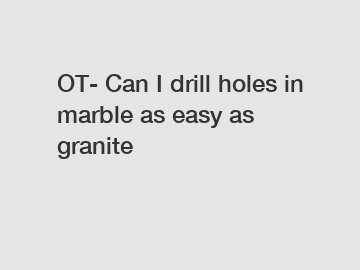How do I Choose a Steel Wire Rope?
When it comes tosteel wire rope, understanding its properties and choosing the right one for your specific application can make all the difference. In this comprehensive guide, we explore the critical factors to consider and provide insights into selecting the perfect steel wire rope for your needs.
![LJQ2``E%]`]O@{~I9W{]J7S.png LJQ2``E%]`]O@{~I9W{]J7S.png](https://images.techoeidm.com/upload/default/20230921/ac6adcb0cd50b059cb442bd8efc67868.png)
Tensile Strength: The Backbone of Safety
Exploring Tensile Strength
Tensile strength is the foundation of any steel wire rope's performance. It depends on several factors, including the rope's dimensions, wire tensile strength, and construction.
Safety First
Remember, a steel wire rope should never be subjected to a load exceeding 50% of its breaking load. This ensures a safety margin in case of unexpected stress.
Factors Affecting Tensile Strength
While the design of the steel wire rope has minimal impact on tensile strength (up to approximately 5%), changing the core from fiber to steel can make a slight difference (around 10%). The most significant changes occur when altering dimensions or using compacted steel wire ropes, or wires with different tensile strengths.
Understanding SWL and WLL
In many cases, steel wire ropes must meet specific SWL (Safe Working Load) or WLL (Working Load Limit) values. These values are determined by dividing the rope's tensile strength by the required safety factor for the application. Keep in mind that various national and international norms and standards define these safety factors.
Abrasion Resistance: Protecting Against Wear and Tear
Thick Outer Wires for Durability
Steel wire ropes with thick outer wires, such as 6x7 Standard or 6x19 Seale, excel in abrasion resistance. Lang lay ropes, in particular, offer superior resistance compared to regular lay steel wire ropes. Additionally, using wires with higher tensile strength can further enhance abrasion resistance.
Bending Fatigue Resistance: Ensuring Flexibility and Endurance
More Wires, Better Resistance
The number of wires in the strand directly influences bending fatigue resistance and flexibility. Lang lay ropes outperform regular lay steel wire ropes in this regard. If you require increased bending fatigue resistance, consider using pre-formed steel wire ropes.
See also:Overmolding vs Insert Molding Advantages & Differences ...
ER Wrench O Type For ER Collet Nut
Elastomer: PTFE and PEEK 4
What is the best CNC milling machine for intricate machining?
How can CNC milling improve specialized part production?
7 Tips for Quality Control in Extrusion Prototypes
How can rapid tooling for consumer products streamline production processes?
Corrosion Resistance: Shielding Against Environmental Damage
Galvanization and Rustproof Wires
For protection against corrosion, opt for galvanized or rustproof wires. Lubricating with specialized grease or oil can further enhance corrosion resistance. In highly corrosive environments, choose steel wire ropes with thick outer wires for added durability.
Elongation: Managing Stretch and Modulus
Elongation Characteristics
Steel wire ropes with fewer wires, such as 1x7 Standard and 1x19 Standard, exhibit minimal elongation and possess a higher elasticity modulus. They are ideal for guy ropes but not suitable for sheave or block applications. For limited elongation when running over sheaves, consider using 6x7 or 6x19 steel wire ropes with a steel core.
Rotation Resistance: Minimizing Twisting
Addressing Rope Rotation
Standard 6-lay and 8-lay steel wire ropes tend to rotate when hanging freely under load. Regular lay steel wire ropes offer more rotation resistance than lang lay ropes. Steel wire ropes with a steel core rotate less than those with a fiber core. To achieve the highest rotation resistance, explore low-rotation and rotation-resistant steel wire ropes with specialized constructions.
Crushing Resistance: Preventing Flattening
The Role of Steel Core
A steel core provides superior support for strands, reducing the risk of flattening. Strands with fewer but thicker wires offer greater resistance to crushing. Additionally, 6-lay steel wire ropes exhibit better crushing resistance compared to 8-lay ropes.
Vibration and Pulsation Resistance: Mitigating Impact
Dealing with Vibrations
Vibrations can impact steel wire ropes, potentially leading to localized damage. Flexible steel wire ropes tend to absorb and withstand vibrations better. Selecting the right steel wire rope and end terminals is crucial for maintaining pulsation resistance and ensuring a longer rope lifespan.
In conclusion, choosing the right steel wire rope involves considering a range of properties and factors. By understanding these key characteristics and their relevance to your application, you can ensure safety, durability, and optimal performance in your operations.
Unlocking the Secrets of Rapid Prototype Machining Corp
What are Benefits of Stone Polishing at Home
Mastering CNC Milling for Intricate Components
How can rapid tooling benefit consumer products?
Unlocking the Answers: Key Questions to Ask When Ordering CNC Milling for Specialized Parts
Optimal Pressure for Torch Cutting: A Comprehensive Guide
How to Save Money When Buying wholesale post tension wedges









